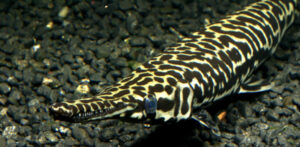A tidal bore is a wall of water that carries the tide up the mouths of some rivers. This wave goes against the current, and after it passes, the current switches and flows upriver.
For a tidal bore to form, you need first of all a very high tide, six metres or more. The river must shallow and gradually sloping, while the estuary it empties into should be funnel-shaped. Narrows channels usually squeeze the bore, increasing its volume and power.

River Nith Dumfries and Galloway Tidal Bore. Photo: Richard Long/Shutterstock
A tidal bore moves around three times faster than the normal tide. It roars or rumbles as it travels. You can hear a tidal bore from kilometres away, for several hours. Turbulence in the water creates bubbles and foam, and the interaction of this aerated water with islets, rocks, sediment, and sand bars creates the cacophony.
Though some dramatic bores, such as in Canada’s Bay of Fundy, can occur at any time, others are at their strongest during full and new moons in spring. This is when tides are highest. Bores do not occur during neap tides, which take place seven days after the spring tide. At this time, the Earth, moon, and sun form a right angle, causing weaker tides.
Are they dangerous?
Because some bores can swell so high, they are often mistaken for tsunamis. The sun and moon’s gravitational pull on the Earth causes fluctuations in seawater levels, which create bores under the right conditions. Meanwhile, tsunamis are giant waves in the ocean caused by tectonic or volcanic activity. Tidal bores are not as violent or powerful as tsunamis. You can observe a tidal bore from a slightly elevated location, while if a tsunami approaches, you flee for higher ground immediately. However, both can inflict damage.
Tidal bores can be a nuisance for coastal towns and those living near a river. The bores can carry dangerous debris like broken trees and infrastructure. In most cases, authorities manage the power of the bore with dams, rock walls, or canals. The bores can destroy ships, uproot vegetation, flood roads and homes, and sweep away animals. They are at the wave’s mercy and can die from colliding with debris.
Festivals
There are over 60 tidal bores in the world. One of the most famous is the Qiantang tidal bore on the Qiantang River in eastern China. It is the highest in the world, reaching 10m high and three kilometres wide in certain locations. This bore can move at over 40kph.
When the bore hits the rock walls, the crashing wave can soak everyone nearby. This spectacle is so iconic that a festival celebrates its arrival, which is predicted by tidal charts.
The International Qiantang River Tidal Bore Festival has run every year since 1994, typically in September. Spectators flock to various lookout points along the river, eating celebratory moon cakes and enjoying the sight. In 2013, Red Bull decided to hold a surfing competition on the river around that time.

A group of people surfing the Severn Bore. Photo: 1000 words/Shutterstock
China is not the only country to turn the power of a tidal bore into a sporting opportunity. On the Pasta Benak in Sarawak, Malaysia, surfers, paddleboarders, and canoeists display their skills on the waves. And in Nova Scotia, Canada’s Bay of Fundy, home to the highest tides in the world (up to 16m), commercial whitewater rafting in the bore is well-established.
Surfing culture
Riding a tidal bore is a unique thrill for surfers and paddleboarders. In 1988, Stuart Matthews of the UK became the first person to surf the Qiantang bore, riding its big wave for almost two kilometres. And in 2006, Steve King surfed the UK’s Severn bore for a record 12km. The Severn has attracted surfers since 1955.
The Amazon River has a tidal bore called Pororoca that draws an amateur surfing crowd. Even the frigid Turnagain Arm in Alaska, home to one of the largest bores in the world, has become popular with surfers.






